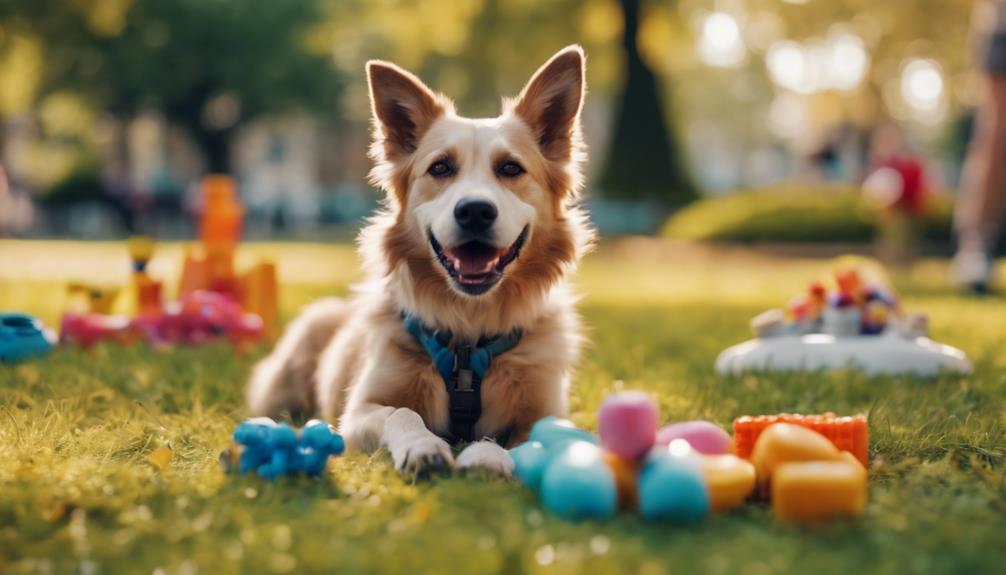Training a stubborn dog presents unique challenges that require a thoughtful and strategic approach. Employing positive reinforcement techniques, maintaining consistency, and understanding specific behavioral traits are crucial for success. Additionally, short, engaging training sessions can significantly enhance focus and compliance. However, many pet owners overlook the importance of socialization and varied environments, which can be pivotal in developing a well-adjusted dog. As we explore these techniques further, it becomes clear that the journey to effective training is multifaceted and often requires a deeper understanding of canine behavior.
Understanding Corgi Behavior
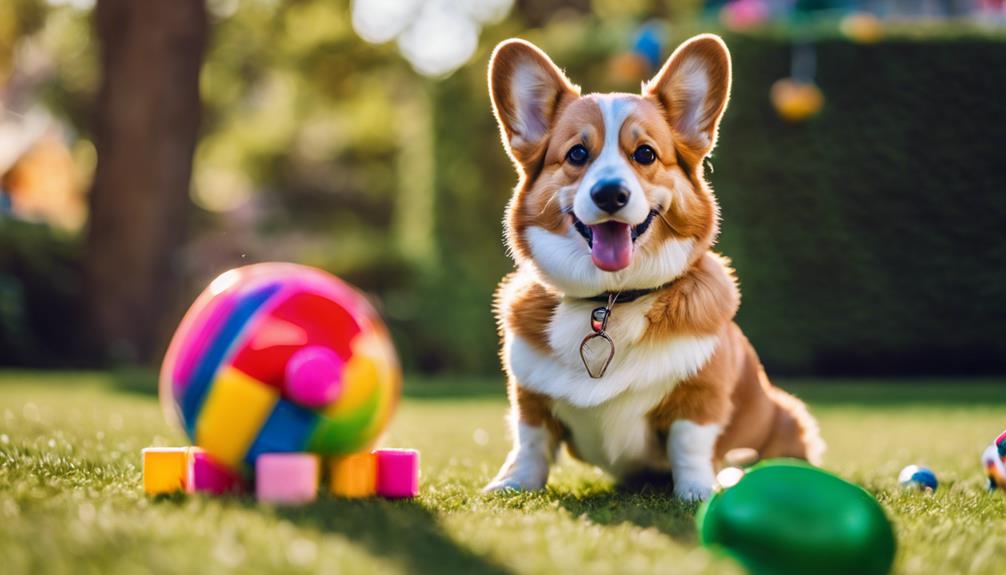
Understanding Corgi behavior is essential for effective training, as their unique traits and intelligence can both challenge and enhance the learning process. Corgis possess distinct quirks, such as their playful nature and strong herding instincts, which can influence how they respond to commands. These behavioral instincts make them eager to learn but also prone to stubbornness at times.
Recognizing these behaviors can help owners develop strategies that cater to their needs. For instance, Corgis may exhibit a tendency to bark excessively or herd children and other pets. Understanding these patterns allows trainers to address issues effectively and create a positive training environment.
Positive Reinforcement Strategies
Positive reinforcement strategies are essential for effectively training a stubborn dog, as they leverage the animal's natural desire for rewards to encourage desired behaviors.
One effective technique is treat motivation, where dogs receive a tasty treat immediately after performing the desired action. This helps them associate good behavior with rewards. However, reward timing is crucial; the reward must occur right after the behavior to strengthen the connection.
Additionally, varying the types of rewards can keep a dog engaged and motivated. For example, using praise or toys alongside treats can make training sessions more enjoyable.
Consistency in Training
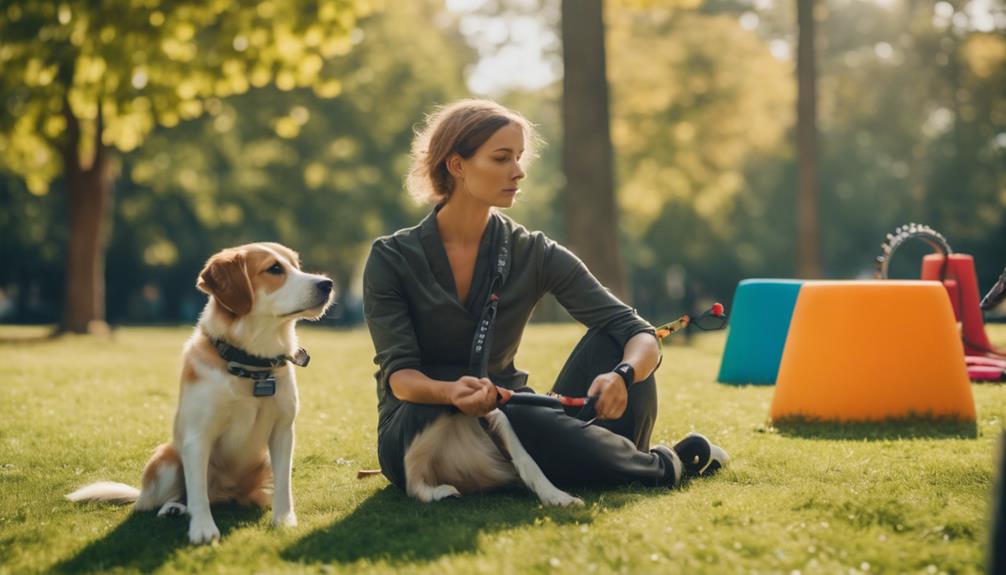
Consistency in training is crucial for effectively teaching a stubborn dog.
This involves establishing clear commands that are easy for the dog to understand, maintaining a regular training schedule to reinforce learning, and employing positive reinforcement methods to encourage desired behaviors.
Establish Clear Commands
Establishing clear commands is essential for effective training, as it helps dogs understand expectations and fosters a reliable communication system between the owner and the pet.
Use consistent verbal commands, such as “sit,” “stay,” and “come,” to create a strong foundation. Additionally, incorporate body language cues, like hand signals or gestures, to reinforce these commands. This combination aids in reducing command variations that may confuse your dog.
It is crucial to maintain consistency in your tone and delivery when issuing commands, as dogs are sensitive to changes in their owner's demeanor.
Regular Training Schedule
How can a regular training schedule enhance your dog's learning and behavior? A consistent training routine is crucial for developing a stubborn dog's skills and improving their responsiveness. Establishing a regular schedule offers several benefits:
- Reinforcement of Learning: Frequent practice helps solidify commands and behaviors.
- Predictability: Dogs thrive on routine, making them more comfortable and eager to learn.
- Progress Tracking: A structured schedule allows owners to monitor improvements and adjust training strategies.
- Strengthened Bond: Regular interaction during training sessions fosters a stronger relationship between the dog and owner.
Positive Reinforcement Methods
Utilizing positive reinforcement methods consistently can significantly enhance a stubborn dog's motivation to learn and adhere to commands.
One essential aspect of this training is treat selection; high-value treats can make a difference in a dog's eagerness to respond. Choose treats that your dog loves, as this will increase their focus during training sessions.
Additionally, reward timing is crucial; delivering the treat immediately after the desired behavior strengthens the connection between the action and the reward. This consistency not only helps the dog understand what is expected but also builds a positive association with training.
Incorporating these techniques into a regular routine will foster a trusting relationship between you and your dog, making training more effective and enjoyable for both parties.
Short Training Sessions
Short training sessions, typically lasting no more than 5 to 10 minutes, can significantly enhance a stubborn dog's ability to focus and retain new commands. Dogs often have short attention spans, making it essential to minimize training distractions.
Here are some effective strategies for short training sessions:
- Keep Commands Simple: Use clear and concise commands to avoid confusion.
- Use High-Value Treats: Reward your dog with treats they love to motivate them.
- Limit Distractions: Choose a quiet environment free from noise and other animals.
- End on a Positive Note: Always finish sessions with a successful command to boost confidence.
Engaging Playtime Techniques
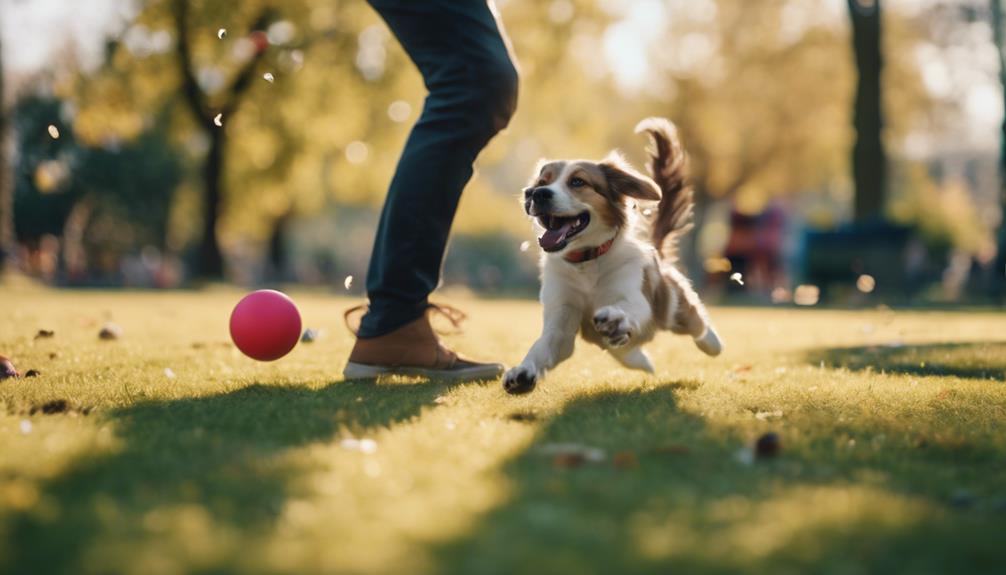
Incorporating engaging playtime techniques into your dog's routine can significantly improve their responsiveness during training sessions.
Interactive toys, such as puzzle feeders or treat-dispensing balls, stimulate your dog mentally and physically, making training more enjoyable. These toys encourage problem-solving, increasing focus during lessons.
Additionally, fetch variations can enhance engagement. Instead of traditional fetch, try using different objects like frisbees or balls with unique textures to keep your dog interested.
You can also introduce timed fetch games or incorporate commands during play to reinforce training concepts.
Setting Realistic Goals
Establishing realistic goals is essential for effectively training a stubborn dog, as it sets a clear framework for progress and helps manage expectations. A focused training mindset plays a crucial role in goal setting, ensuring both the trainer and the dog remain motivated.
Here are four key points to consider:
- Start Small: Focus on basic commands like 'sit' or 'stay' before advancing to complex tricks.
- Be Specific: Define clear, measurable objectives, such as practicing for 10 minutes daily.
- Monitor Progress: Keep track of improvements to adjust goals as needed.
- Celebrate Success: Acknowledge each achievement to maintain motivation and reinforce positive behavior.
Utilizing Clicker Training
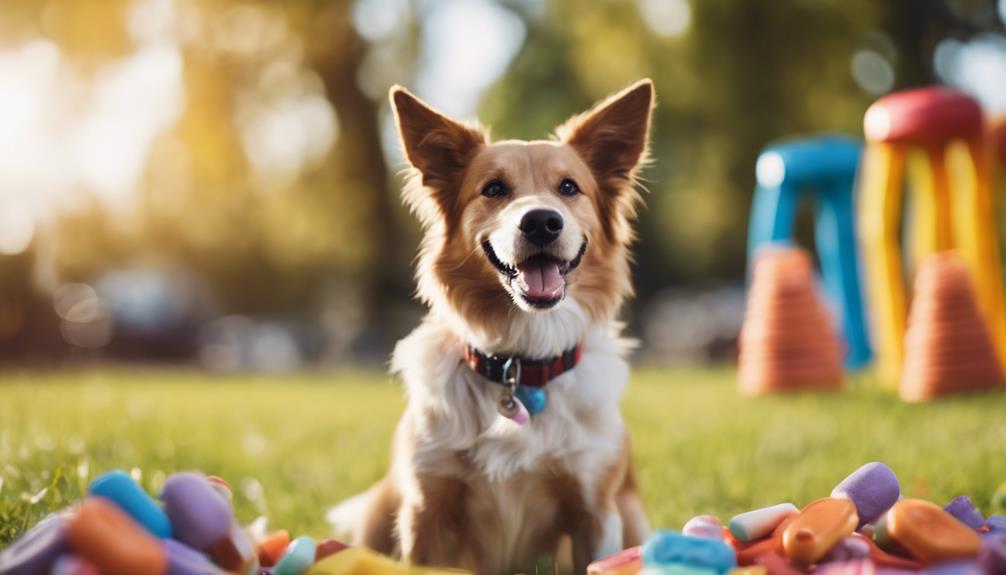
Clicker training is a highly effective method for reinforcing desired behaviors in stubborn dogs, utilizing a distinct sound to mark and reward positive actions.
One of the primary clicker benefits is its ability to provide immediate feedback, helping dogs understand which behaviors are desired. This method is particularly useful when training distractions arise, as the sound of the clicker can regain a dog's focus.
To implement clicker training effectively, follow these steps:
- Choose a consistent clicker sound.
- Pair the click with a reward, like a treat.
- Start with simple commands and gradually increase complexity.
- Practice in various environments to reduce training distractions.
Socialization Essentials
Effective training techniques, such as clicker training, can be complemented by a strong focus on socialization, which is vital for helping stubborn dogs develop confidence and adaptability in various situations.
Both puppy socialization and adult dog socialization are essential components of a well-rounded training program.
Here are four key aspects to consider:
- Exposure: Introduce your dog to diverse environments, people, and other animals to enhance their comfort level.
- Positive Reinforcement: Reward your dog for calm behavior during social interactions, reinforcing good habits.
- Gradual Progression: Start with less overwhelming situations and gradually increase the challenge to build confidence.
- Consistency: Regularly engage your dog in social settings to maintain their social skills and adaptability.

